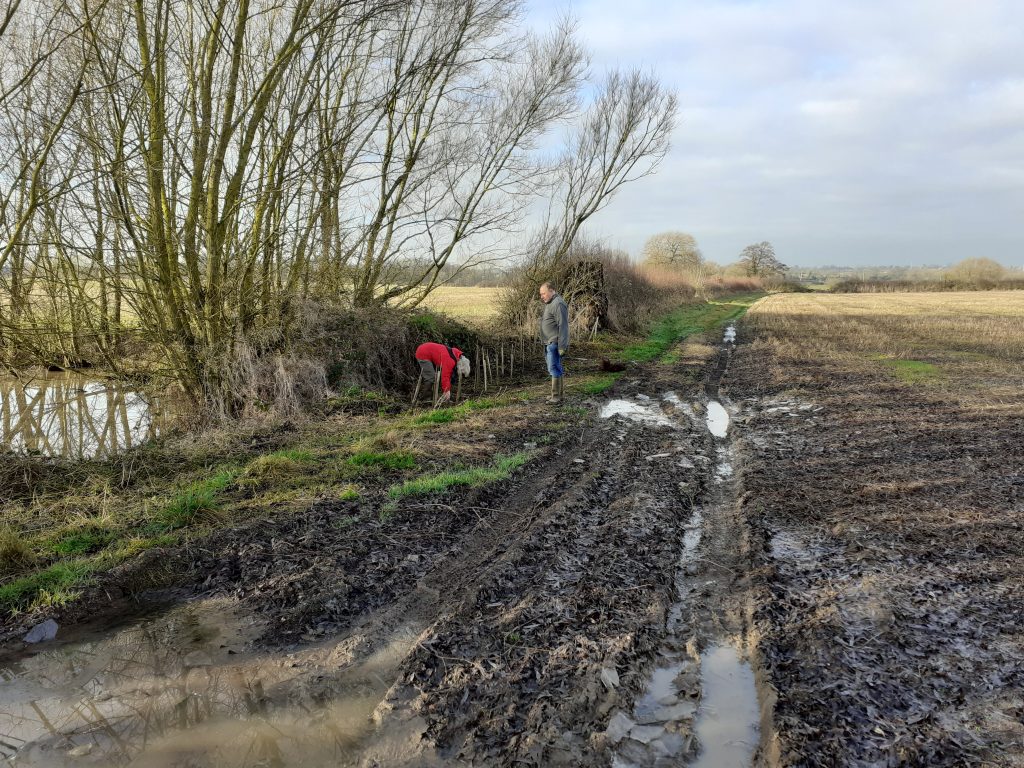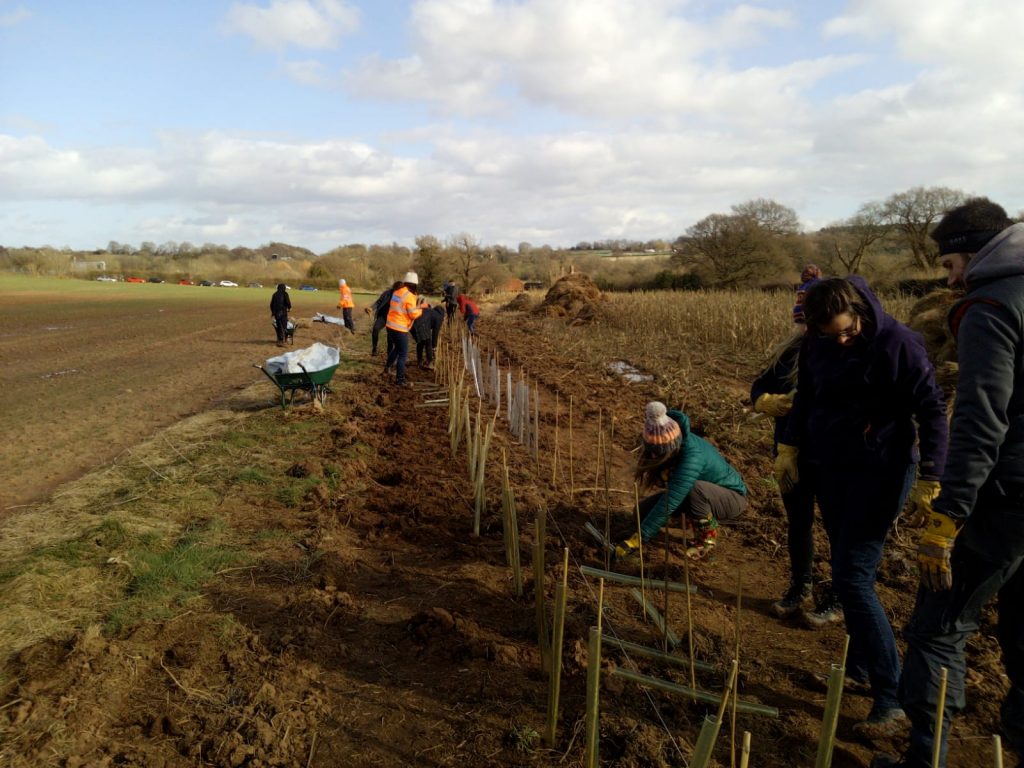As part of ‘Blythe Alive’, a project to improve the River Blythe SSSI and its environment, we are planting native riparian trees and hedgerows at various sites near to the River Blythe.
One of the benefits of hedgerows is their importance in acting as habitats for small animals such as birds and invertebrates. Hedges provide food and shelter for animals, and also act as corridors for animals to move along, improving connectivity between habitats.
Hedgerows are also important for preventing flooding. Hedgerows provide weather barriers and contribute to natural flood management by intercepting rainfall and slowing runoff from the land.
When planting close to a river, as we are doing for our Blythe Alive project, the flood management aspect of hedgerow gapping-up has been particularly important. The improved hedgerows will help to absorb rainfall and therefore limit the amount of water running into the river. They will also intercept sediment and pollutants from land run-off which would otherwise contaminate the river. This lowers risks of flooding, loss of nutrients from the land, and pollution of the river.
Hawkswell Farm
We have planted 1000 hedgerow plants and Black Poplars at Hawkswell Farm. This planting contributes to gapping-up the existing hedgerows, which is necessary for maintaining their longevity and structure.
This work was carried out with the help of our dedicated volunteers, and plays an important part in our project to improve the health status of the River Blythe and the quality of its surrounding ecosystem.
Packington Farm
With the help of a team of volunteers from Severn Trent Water, we planted around 2000 hedgerow plants at Packington Estate to create a new hedgerow for the field. The new hedgerow will provide more habitats and more protection against flooding for the field.


